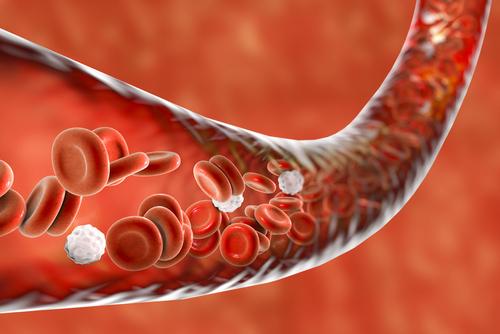A new approach for protecting diabetics from vascular diseases
ANI Feb 27, 2018
A new approach has been found for protecting people with diabetes from their higher risk of advanced blood vessel disease, which sets the stage for early heart attacks and strokes, a new research has suggested.

According to a study conducted by University of Washington Health Sciences, in collaboration with Novo Nordisk A/S, the novel approach will help prevent vascular disease in diabetes.Cardiovascular problems from atherosclerosis - plaque-like lesions forming in artery walls - are the major cause of death in people with type-2 diabetes and metabolic syndrome.People with metabolic syndrome exceed the normal range for several clinical measurements – blood pressure, blood sugar levels, harmful lipids, body mass index, and belly fat.The researchers studied mice with metabolic syndrome. The mice were obese and had impaired glucose tolerance, a sign of pre-diabetes.
In the study, an insulin-mimicking synthetic peptide called S597 was shown to both reduce blood sugar levels and slow the progression of atherosclerotic lesions.Insulin, even when it controls diabetes, does not prevent atherosclerosis.While Karin E. was the senior author, Jenny Kanter was the lead author. They are scientists at the UW Medicine Diabetes Institute.This study showed that, when S597 binds to insulin receptors, it preferentially activated a signaling arm known as the Akt arm, which is associated with lowering blood sugar levels and with other beneficial effects.It only weakly activated or may have even prevented the activation of, another signaling arm, called the Erk arm, that is suspected of causing undesirable side effects.
The researchers were impressed by the mechanisms behind the S597 slow-down of atherosclerotic lesions.Atherosclerosis starts with fatty streaks appearing in blood vessel walls. As the atherosclerotic lesion grows, inflammation provoked by obesity and recruitment of immune cells can speed the growth of the plaque.Certain white blood cells, particularly monocytes that participate in inflammation, and macrophages, or "big eaters" that are supposedly the bloodstream's cleanup crew, are among the culprits.They can become overladen by engulfing lipids and can turn into foam cells. These cells gather and then perish. The core of the lesion fills with dead cells and other debris. If it ruptures, a clot can rapidly form in the vessels of the heart or brain.In mice given S597, the problem with excessive white cells in the lesion seems to be nipped at its source: the early stages of production of inflammatory monocytes and macrophages.
In fact, the amount of blood-forming stem cells in the bone marrow was lowered to levels observed in lean, healthy mice. These stem cells exhibited less activity from the undesirable signalling pathway originating in the insulin receptors.The numbers of macrophages dying in the lesion were also fewer. While the number of intact cleanup cells rose, the relative content of macrophages in the lesion cores did not go up. The S597 may have either kept more macrophages alive longer or impeded their pile up.Probably because of all this influence on white cells, the lesions did not grow with the rapidity expected in diabetes and metabolic syndrome. The researchers also saw that lesions with debris-filled cores were less common in these mice.The researchers noted that the S597 did not alter cholesterol levels in the plasma or systemic inflammation overall.The study is published in the journal Diabetes, a peer-reviewed scientific journal of the American Diabetes Association.
-
Exclusive Write-ups & Webinars by KOLs
-
Daily Quiz by specialty
-
Paid Market Research Surveys
-
Case discussions, News & Journals' summaries